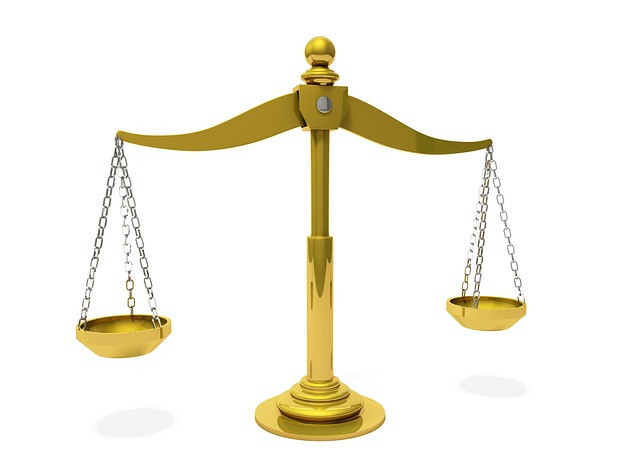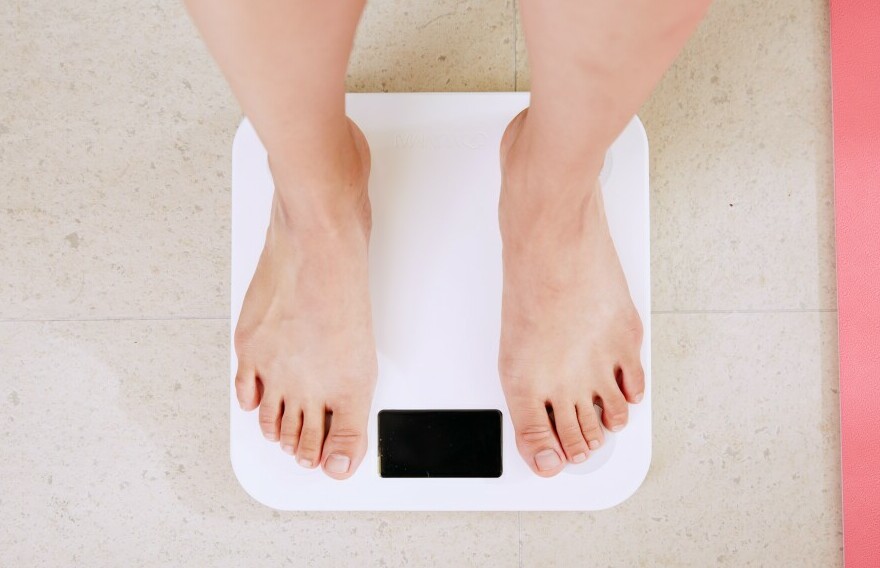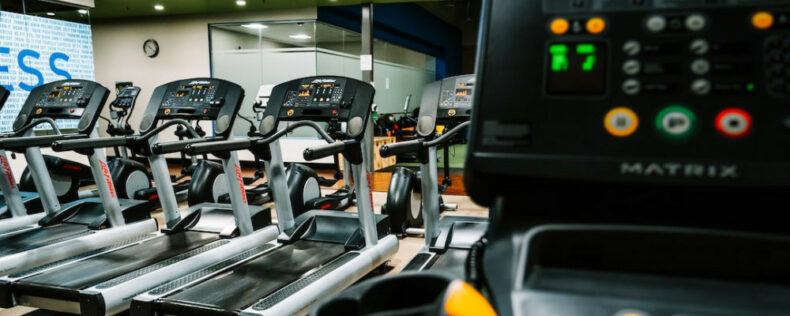In this post, I want to break down the relationship between doing cardio and losing weight, because there are often lots of misconceptions about this topic. When it comes to achieving weight loss goals, the most obvious method that likely comes to mind for a lot of people is to start doing cardio. They’ll head to the gym and join all the other people endlessly spinning and jogging away on ellipticals and treadmills.
While the intention is good, is this really a good way to lose weight? It’s time to clear up the confusion surrounding cardio workouts and weight loss, and share with you what you should really do if you want to get rid of that stubborn body fat.
Why Should You Do Cardio?
Simply enough, it’s in the name: cardiovascular exercises are meant to improve your cardiovascular health. Doing cardio increases your heart rate and blood flow, which has many benefits for your body. Among these benefits, some of the more notable are that it reduces your chance of getting heart diseases and heart attacks. In addition, you’ll also experience improvements in other areas, such as increased lung capacity and more natural energy during the day. There are countless other benefits as well, so it should certainly be part of a healthy lifestyle.
Does Cardio Lead to Weight Loss?
Despite all the benefits of doing cardio, however, it shouldn’t be used as a primary tool for fat loss.
Your body gains and loses weight based on two main factors: how many calories you take in and how many you burn. If you ingest more calories in a day than you use, you’ll be at what’s called a calorie surplus. On the other hand, if you ingest fewer calories in a day then you use, you’ll be at a calorie deficit.
If you’re always at a surplus, the unused calories in your body will gradually turn into fat for energy storage. In contrast, if you’re consistently at a deficit, what you eat won’t be enough to fuel your body, which means your body will need to obtain additional energy from those aforementioned fat stores. This is how you lose weight.
As you can see, losing fat is simply about staying at a calorie deficit.

Now that we understand the basic science behind losing weight, let’s see how cardio plays a role in this process. Doing cardio increases the number of calories you burn in a day. Given the same number of calories consumed, you could hypothetically burn enough additional calories through cardio to create a deficit. The problem here is that this is much easier said than done.
The number of calories burned during a cardio workout depends on the duration and intensity of the exercise. For reference, a 30-minute jog at a casual pace of 5 miles per hour burns an average of 200-300 calories. This doesn’t sound too bad at first, but in reality, that’s surprisingly little. If you stopped at McDonald’s for dinner on the way home from the gym, you’d cancel out those calories with as little as an order of medium fries.
Unless you’re able to run for at least 1-2 hours a day, the typical 15-30 minute cardio session at the gym won’t burn that many calories, and anything you do burn can be easily gained back if you’re not careful with what you eat. This makes achieving and maintaining a deficit very difficult, and for people who already tend to eat at a surplus, this likely won’t result in any weight loss at all.
What’s the Better Solution?
Instead, what you should really prioritize is adjusting your diet. Since increasing your calories burned isn’t as practical and sustainable, focus on decreasing the calories you take in. For one thing, this is easier to do. You could spend half an hour sweating away at the gym, or you could simply turn down that slice of cheesecake after dinner. Although the net effect might be the same, the difference is that the latter requires less effort (for most people), which means you’ll be more likely to stick to it over the long-run.
On top of that, by monitoring your calorie intake, you’ll have a lot more control over your deficit. Since your body uses about the same amount of calories every day to perform its routine functions, also known as your maintenance calories, you’ll be able to determine how many calories you should consume every day to stay below that amount and create a deficit. Then, by using labeled recipes, reading nutrition facts, and preparing meals in batches, you’ll be able to ensure that you’re not exceeding that threshold.

In comparison, trying to maintain a deficit only through exercise would be extremely difficult. Without keeping track of what you eat, you wouldn’t know how many additional calories you would need to burn to actually achieve a deficit. You could be exercising every day thinking you’re losing fat, yet still be at a surplus!
With all this being said, how should you properly reduce your calorie consumption to lose weight? Well, I recommend checking out another post in which I explain in more detail how you can use your diet to either lose fat or put on muscle. In short, however, if you’re trying to lose weight, you shouldn’t just quit eating and starve yourself every day to create as much of a deficit as possible. Instead, the goal for a healthy deficit is to consume a few hundred calories below your maintenance level.
The exact number will vary depending on your personal fitness goals; people who only need to lose a few pounds may just need to reduce their daily consumption to 500 calories below maintenance, whereas people with greater weight loss goals may need a higher deficit. It’s best that you do some research or consult with a doctor to know what your specific needs are.
Additionally, if you want suggestions for coming up with a diet plan to help you maintain your deficit, I’ve written a post that explains the dieting approach I personally implemented to meet my calorie deficit and achieve a lean physique.
How to Properly Use Cardio for Weight Loss
Before I wrap this article up, let me reiterate that although relying on cardio isn’t the best method for burning fat, it still plays a critical role. Maintaining heart health is essential regardless of weight and body fat, so it’s important to continue implementing some element of cardio in your workouts.
Furthermore, when it comes to weight loss, cardio can still serve a secondary role. Many people falsely believe that they’re directly burning fat when they do cardio exercises. Yes, you’re using energy, but that energy probably isn’t coming from stored fat. However, if you’re already eating at a deficit, doing additional cardio will increase your energy expenditure and amplify that deficit. Over time, as you commit to being at a constant deficit, your body will gradually burn the fat off. Ironically, most of this process will occur while you’re not working out.
If you want to make your cardio workouts more oriented towards weight loss, the key is to aim for a high level of intensity. Rather than spending excessive amounts of time doing low-intensity activities, like jogging on a treadmill, to burn a relatively low number of calories, you’ll want to challenge yourself to do more demanding exercises that will really elevate your heart rate and make you burn calories a lot more efficiently.
There are plenty of exercises that are considered high-intensity. Performing HIIT (high-intensity interval training) exercises, boxing, and jumping rope are simple activities that don’t require much equipment, yet they burn calories quite efficiently. 15 minutes of intense jumping rope could potentially burn approximately the same number of calories as 30 minutes on a treadmill or elliptical machine.
Do It Differently this Time

When most people think about fat loss, they automatically think about having to spend hours on cardio machines in the gym. Not only is this imagery very bleak and discouraging, it’s also quite misleading. Low-intensity exercise might be a good way to warm up for a workout or cool down afterwards, but anything more than that is just a waste of time.
If you really want to meet your weight loss goals this time around, it’s time to change your strategy. Instead of jogging on the treadmill for half an hour every day, do 15-minute, high-intensity cardio sessions a few times a week. With the time you’ve saved, use it to plan and prepare healthy, well-portioned meals that’ll keep you at a calorie deficit.
It might be hard at first, as you’ll probably go to bed hungry a good amount of the time. However, push through knowing that this is essentially the feeling of your body burning off fat. In the end, I’m sure those temporary feelings of hunger will surely have been worth it when you finally achieve the body you’ve been dreaming of.
Meanwhile, all those people who still think cardio will simply melt away all of their fat? Yeah, they’ll still be in the gym jogging away; that is, if they haven’t already given up.

